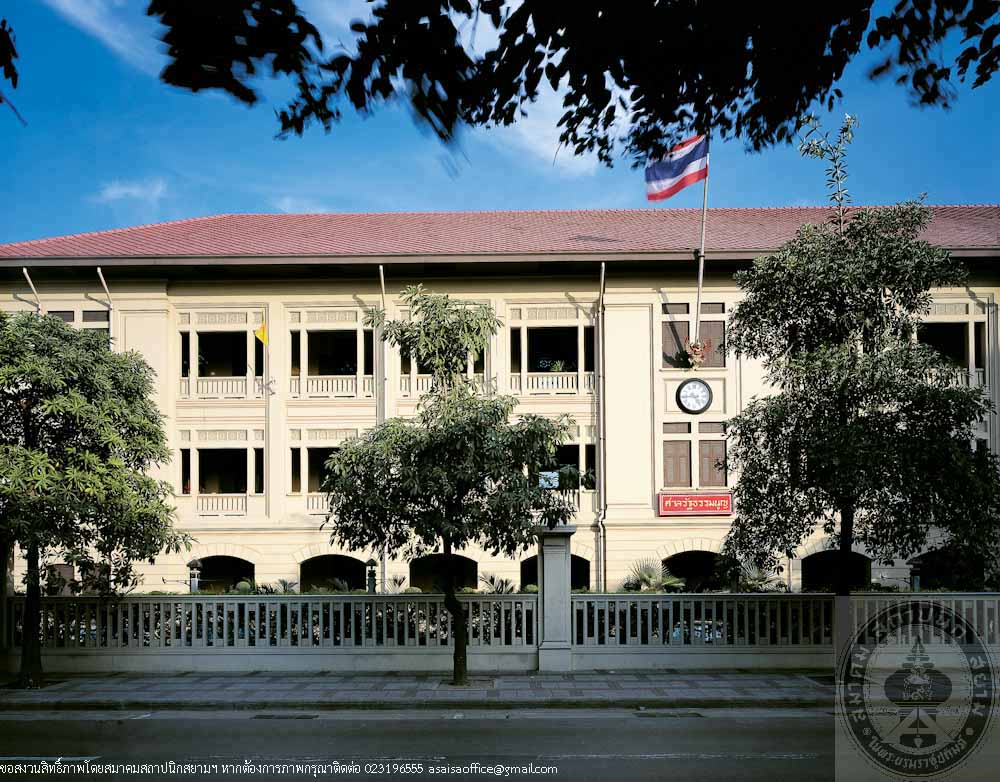ศาลรัฐธรรมนูญ
ศาลรัฐธรรมนูญ
ที่ตั้ง 326 ถนนจักรเพชร แขวงวังบูรพาภิรมย์ เขตพระนคร กรุงเทพฯ
สถาปนิก/ผู้ออกแบบ -
ผู้ครอบครอง ศาลรัฐธรรมนูญ
ปีที่สร้าง ช่วงรัชกาลที่ 5
ปีที่ได้รับรางวัล พ.ศ. 2544
ประวัติ
ศาลรัฐธรรมนูญ เดิมเป็นบ้านของเจ้าพระยารัตนาธิเบศร์ (พุ่ม ศรีไชยันต์) อัครมหาเสนาบดีในรัชสมัยพระบาทสมเด็จพระจุลจอมเกล้าเจ้าอยู่หัว ตัวอาคารรูปแบบสถาปัตยกรรมเรอเนซองส์รีไววัล ค่อนข้างเรียบง่าย มี 3 ชั้น ชั้นล่างสุดผนังเซาะร่องเลียนแบบการก่อหิน ช่องเปิดโค้งอย่างอาคารปาลาซโซแบบอิตาลี สองชั้นบนหน้าต่างส่วนใหญ่เป็นกรอบสี่เหลี่ยมรูปแบบเดียวกันเป็นจังหวะซ้ำๆ ตกแต่งด้วยลวดบัวลักษณะเรียบง่ายเช่นกัน บ้านเดิมของท่านคืออาคารด้านทิศใต้ส่วนหลังทางทิศเหนือ เป็นอาคารที่สร้างต่อเติมภายหลังโดยกระทรวงธรรมการ
ปีที่ก่อสร้างบ้านหลังนี้ยังไม่พบหลักฐานที่แน่นอน มาเริ่มมีบันทึกไว้ตั้งแต่ปี พ.ศ. 2445 เมื่อกระทรวงมหาดไทยขอซื้อบ้านเพื่อใช้เป็นที่พักแขกเมือง ต่อมาในปี 2451 พระบาทสมเด็จพระจุลจอมเกล้าเจ้าอยู่หัวโปรดเกล้าฯให้กระทรวงธรรมการย้ายมาตั้ง ณ บ้านนี้ จึงมีการต่อเติมอาคารดังกล่าวในช่วง ค.ศ. 2463 - 2465 หลังจากนั้นมาอาคารนี้ก็ได้ปรับเปลี่ยนเป็นที่ทำการของราชการมาหลายสมัย จนกระทั่งมีการก่อตั้งศาลรัฐธรรมนูญ จึงได้มอบให้กรมศิลปากรออกแบบบูรณะอาคารและปรับปรุงบริเวณโดยรอบ จนแล้วเสร็จในปี 2544 จากนั้นได้ใช้เป็นศาลรัฐธรรมนูญมาจนปัจจุบัน

บ้านพระยาสมุหกลาโหม(ศาลรัฐธรรม)
-

บ้านพระยาสมุหกลาโหม(ศาลรัฐธรรม)
Constitutional Court Location 326 CharkPhet Road, Khwaeng Wangburapha Phirom, Khet Phra Nakhon, Bangkok
Architect/Designer Unknown
Proprietor Constitutional Court
Date of Construction King Rama V period
Conservation Awarded 2001 AD
History
The Constitutional Court was originally a residence of Chao Phraya Rattanathibet (Phum Sichaiyant), Prime Minister in the reign of King Rama V. The house is Renaissance Revival stle in rather simple form with 3-storey, the lowest storey is featured with rusticated walls and arched windows as those of Italian palazzos. The upper 2 storey are installed with rectangular windows in repeated rhythm, and decorated with mouldings of simple designs. The existing building comprises the original house at south, and the northern part, which was added in later period.
There is no evidence on the date of construction but it was recorded that the Ministry of Interior bought the house in 1902 to be a reception house for state guests. Later in 1908, King Rama V had the Ministry of Education moved to this house thus an extension of the northern part was carried out during 1920 – 1922. Later, it became an office for a few government organizations until the Constitutional Court was established. The Fine Arts Department was assigned to restore the building. The restoration was completed in 2001, and then the building has served as Constitutional Court house to the present day.